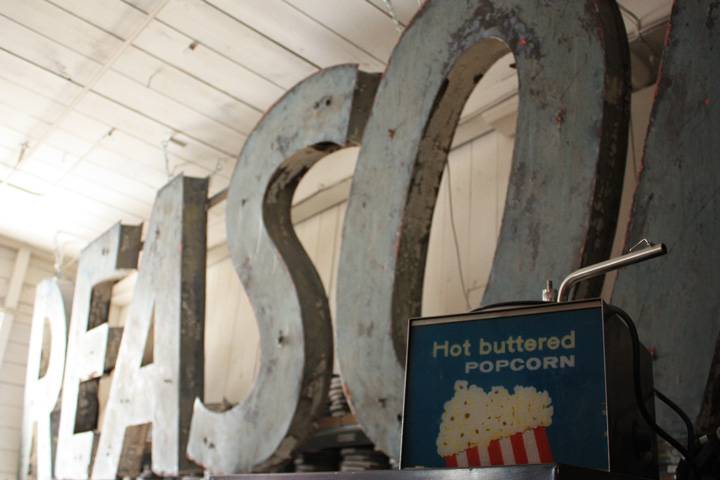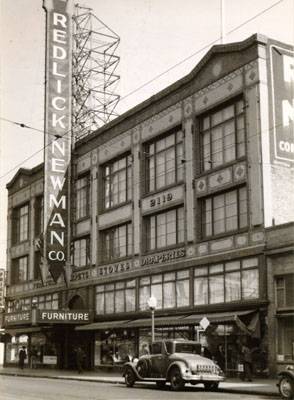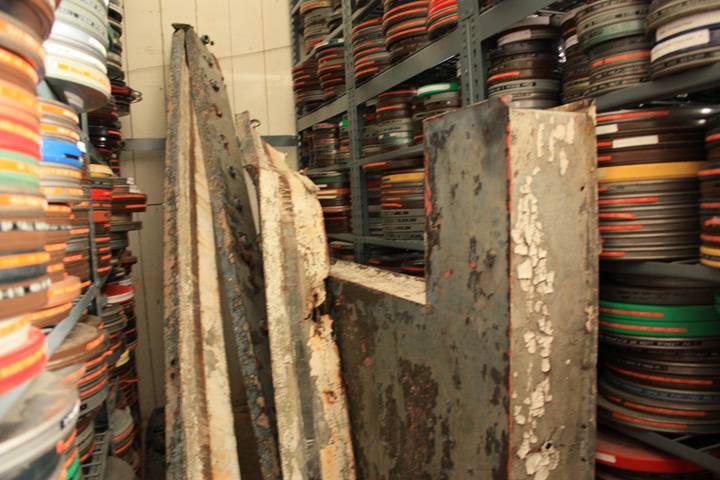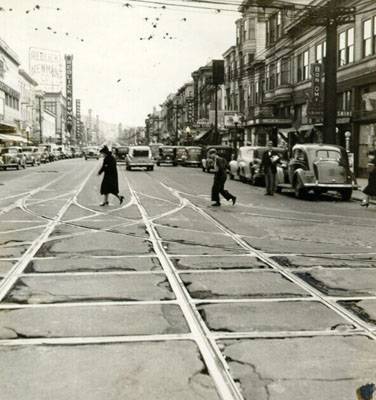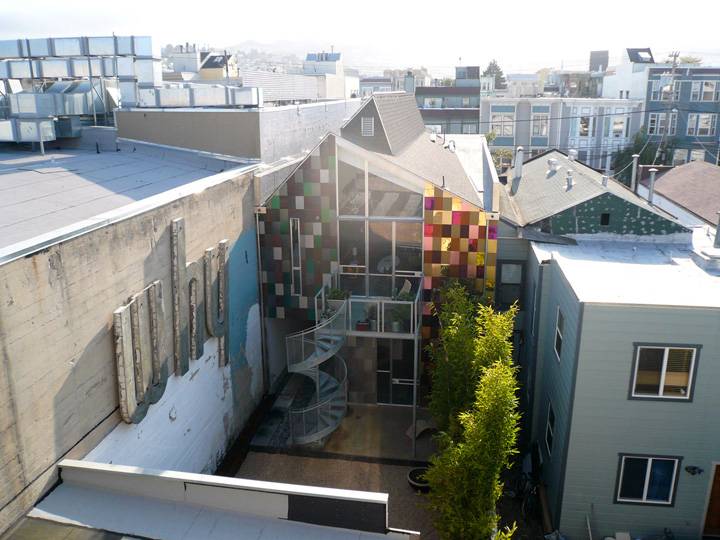17 Reasons Remembered: Difference between revisions
mNo edit summary |
(added credit to unknown photo as per request by Joey Harrison the photographer!) |
||
| Line 23: | Line 23: | ||
[[Image:17-reasons bw long view.jpg]] | [[Image:17-reasons bw long view.jpg]] | ||
'''17 Reasons sign still intact in | '''17 Reasons sign still intact in 1989. Looking south on Mission Street toward 17th Street.''' | ||
''Photo: | ''Photo: © [https://www.flickr.com/photos/joeyharrison/62764134 Joey Harrison]'' | ||
“It was so beautiful in the early morning light,” says filmmaker and historian Jenni Olsen, whose film, “Blue Diary” gave a supporting role to the sign. “It was one of the most treasured landmarks of San Francisco’s Mission District.” | “It was so beautiful in the early morning light,” says filmmaker and historian Jenni Olsen, whose film, “Blue Diary” gave a supporting role to the sign. “It was one of the most treasured landmarks of San Francisco’s Mission District.” | ||
Revision as of 11:25, 25 January 2017
Historical Essay
by Deia de Brito, May 29, 2010. Originally published in Mission Local
The writing on the wall. Long after the furniture store it had advertised from 1935 until it closed in 1975, the towering sign was as familiar a navigational tool as Twin Peaks or Bernal Hill.
Photo: Mission Local
Long time Mission residents know the sign – 17 Reasons Why! — that sat atop Thrift Town on Mission and 17th streets as a much loved memory. Stephen Parr knows it as an icon that he now cares for in the Capp Street warehouse where he runs the San Francisco Media Archive. There, all 600 pounds of the word “Reasons” hangs on one wall. The "17" rests between rows of film reels.
“Any sign is a guide that points people in a direction,” says Parr.
The Redlick-Newman Furniture Building in 1935 at 17th and Mission. The scaffolding for the 17 Reasons sign is visible on the roof to the right and behind the vertical store name sign.
Photo: San Francisco History Center, San Francisco Public Library, AAC-7335
Long after the furniture store that put up the advertisement in 1935 closed in 1975, the towering sign was as familiar a navigational tool as Twin Peaks or Bernal Hill.
17 Reasons sign still intact in 1989. Looking south on Mission Street toward 17th Street.
Photo: © Joey Harrison
“It was so beautiful in the early morning light,” says filmmaker and historian Jenni Olsen, whose film, “Blue Diary” gave a supporting role to the sign. “It was one of the most treasured landmarks of San Francisco’s Mission District.”
The sign had presence. It starred in Nathaniel Dorsky’s underground film 17 Reasons in 1987, and the play 17 Reasons (Why) produced by Intersection for the Arts in 2002.
The "17" in hiding at the SF Media Archive.
Photo: Mission Local
In May of 2002, the Foster Media advertising agency took down the sign, piece-by-piece. Parr rescued the pieces in three trips from a Benicia scrap yard and cleaned a century of dirt and dead birds from the tangle of rusted steel.
<iframe src="//player.vimeo.com/video/73307986" width="500" height="333" webkitallowfullscreen mozallowfullscreen allowfullscreen></iframe>
Video by Deia de Brito
In its place appeared a billboard advertising Miller Genuine Draft. “Filtrada en Frio” it read in Spanish, “cold-filtered.” Like a good portion of the city’s 1,600 billboards, the rooftop space is now owned by CBS. Currently, the space touts the virtues of Verizon Wireless.
“It went from a landmark to an eyesore,” Parr says.
Even after it came down, the neighborhood fought against its removal. The sign was 67-years-old in 2002, they argued, well over the 50 year-standard for triggering an historic review by the planning department – one that had not happpened. Letters from groups like the National Trust for Historic Preservation, the American Institute of Architects, San Francisco Heritage, and SF Beautiful pressed the city to deny Foster Media the right to put up a billboard.
Proposition G, a city ordinance that banned all new general advertising signs, had recently passed. Although the permit to alter the sign had been issued prior to its passage, it was to retrofit, not remove, the sign. City Planning Director Gerald Green issued a stop-work order on a new billboard a month after 17 Reasons came down. He also called for an investigation into why the Planning Department had not reviewed the permit.
But in the end, Green settled with Foster Media. Case closed. The billboard went up.
In this 1940 view south from 16th and Mission, the words "17 Reasons why" had not been installed yet. The sign (at top left corner of photo) reads "Redlick-Newman".
Photo: San Francisco History Center, San Francisco Public Library, AAB-4694
Experts had tried to remind the city that the icon had historical and sentimental value. The “sign was a spectacular example of electrified signage from the Depression Era in both its graphic design and means of illumination,” wrote Gerry Takano, president of Friends of 1800 Market, an organization that promotes historic preservation. “It is not something that can be reproduced or duplicated in our time.”
The 17 Reasons sign featured individually cut out steel letters, and tubes of neon, a gas that burns naturally red. It was erected before welding became commonplace in sign making, so the pieces of sheet metal were bolted together.
“In the 1930s, there was incredible production, work ethic and methodology that puts to shame what we do nowadays,” says John Law, a sign hanger and sign restorer who also collects historic icons including the Doggie Diner dog heads. Like the cars of that era, he adds, signs lasted forever.
The 17 Reasons sign lasted for so long that many who admired it no longer remembered or knew that the owners of Redlick’s Furniture, opened after the 1906 earthquake, first put it up the sign in 1935. What were the 17 Reasons to buy furniture at Redlick’s? There were none, said Charles Redlick. The objective was to attract customers to the store on 17th and Mission. It worked until shopping malls and construction on the BART line on Mission Street drove business away. The family closed the store in 1975.
The sign stayed and the ambiguity of its logo – “a query and a statement at the same time” as Parr describes it – continued to grip the imaginations of locals and tourists.
“When I came to San Francisco, I saw that fantastic sign…with no explanation but it was enough for me,” wrote Glen Mehn in a 2002 letter to the city protesting the removal of the icon. “I knew where I wanted to live…in the Mission, close to that sign.”
Sam Mogannam, owner of Bi-Rite Market, named his nonprofit space 18 Reasons. “It was one of the signs I’d seen as a kid growing up,” he says, “It was an iconic marker for the Mission.
Recently a local business has expressed interest in re-hanging the sign. Parr wants to see it returned to public view, where it can continue to inspire people. But the cost, he warns, could be prohibitive. “It probably won’t happen anytime soon,” he says. “But anything’s possible.”
The “why”, up in a Shotwell Street backyard.
Photo: Mission Local
Meanwhile, most of the sign still exists, in fragments, within eyesight of the rooftop where it stood for 67 years. The “Why,” taken down several years before 2002, hangs in architect David Baker’s backyard on Shotwell Street.
The exclamation point? That’s a mystery for another day. Its whereabouts remain unknown.

